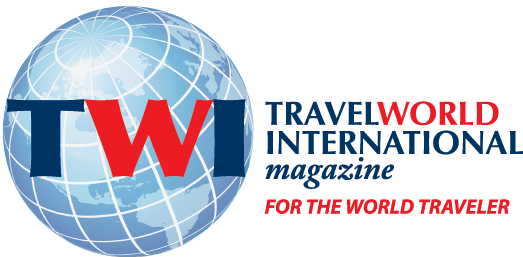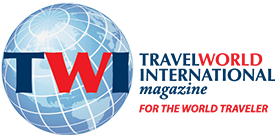

After two months of sheltering in place, I was ready to get the heck out of dodge. Plans were in place since Fall 2019 for me to attend Flagstaff Blues & Brews, the largest blues festival in Arizona. Held every June when the rest of Arizona is hotter than Hades and Flagstaff offers a more refreshing mountain respite, the 2020 festival would mark its seventh year and is organized by the 100% women-owned and run Flagstaff Events company. But along came COVID and, basically, life as we know it was suspended.
When the 2020 festival was officially canceled, I worked with Discover Flagstaff to reschedule my visit for later in June when more businesses would be reopening. Flagstaff is an all-season destination with endless opportunities for outdoor adventures and a fascinating space legacy. The timing was perfect as the Grand Canyon was reopening with restrictions as well.

Family hiking at Lenox Crater 
Volcanic landscape at Sunset Crater
Traveling During the Pandemic
First, know that you need to be flexible, understanding, and responsible.
We are all in this together. No one asked for this to happen, and many businesses are suffering and forced to adapt in ways they never imagined. Be good citizens and adhere to social distancing, mask mandates, and restrictions put in place by the state and local government – not the business owners, management, or staff.

Second, be diligent about social distancing, wearing a mask, using hand sanitizer, and washing your hands while traveling to and from destinations whether you’re flying or driving.
On my two flights to Flagstaff on June 18th, I was fortunate to have an empty seat next to me on each leg. Check with the gate agent before boarding. If the seat next to you is occupied, ask to be moved to another row. I was well prepared with an N-95 mask, gloves, and sanitizing wipes. I wore my mask the entire time on the airplane and in the airport during layovers. Face coverings are required while on the plane but, to be safe, you should also wear them while you are going through security, inside the terminals, and at baggage claim as social distancing can be problematic.
Third, know that airlines have eliminated many flights, and getting to your destination may take longer. My return trip was not quite as smooth. Flagstaff is a small airport, and direct flights were limited to the early morning. I opted to take a later flight that connected in Phoenix and required an overnight layover in Dallas. Check other airlines for better connections, but don’t be surprised if you have to layover somewhere when traveling to destinations other than major cities. Also, purchase food in advance as most food concessions, even in major airports, close by 8:00 p.m.
Fourth, expect minimal service at most restaurants. To limit contact, some restaurants may not offer table service. Instead, guests order at the counter and are notified by beeper for pick-up. Some establishments limit self-service of condiments or coffee accouterments. Restaurants may have a two-hour time limit, which discourages lingering as they are operating at 50% or less capacity and need to accommodate as many guests as possible within this restriction.
Flagstaff is Perfect for Getting Outdoors
One positive aspect of life during the pandemic is that people, both adults and children, are getting outside more than ever. Hiking, biking, kayaking, canoeing, boating, fishing, water sports, tennis, and golfing are all perfect social distancing outdoor activities. Flagstaff has an abundance of hiking trails and outdoor recreational opportunities, including camping.
Flagstaff Lunar Legacy and Outdoor Itinerary
The otherworldly geography found in the Flagstaff area resembles the “magnificent desolation” of the Moon’s surface. Beginning in 1963, astronauts including Neal Armstrong, Frank Borman, Pete Conrad, Jim Lovell, John Young, James McDivitt, Elliot See, Edward Shite, and Thomas Stafford trained here. Many milestones achieved in astronaut science training, instrument development, and lunar mapping occurred in the Flagstaff area.
Sunset Crater National Monument
The terrain of this 900-year-old volcanic landscape resembles that of the Moon and is a site for astronaut field training and equipment testing. Hiking the paths of this desolate landscape is mind-blowing.
Location – One mile north of Flagstaff, Hwy 89 at Loop Rd. Exit 30. (30 minutes)
A’a Trail is an easy .2-mile loop that traverses the Lava Flow Trail. A’a is from the Hawaiian word “rough stony lava.” Sturdy footwear is recommended due to sharp edges along the basalt and loose cinder trail. To the left is the Lava’s Edge Trail. Across the road is the Lenox Crater Trail. O’Leary Lookout Trail (3.6 miles) and Forest Road 545A (4.3 miles) are longer trails for more intermediate-level hikers.
After hiking one or more of the trails at Sunset Crater, continue 14.5 miles on the Loop Road to Wupatki National Monument.
Wupatki National Monument
Although water and food appear to be scarce on the vast desert plains, Wupatki was once a thriving pueblo community. Adults and children are awestruck by the ancient pueblos scattered among red-rock outcroppings across miles of desert prairie. As of June 18th, Wupatki National Monument is open with limited visitor services. Trails and restrooms are open, but The Wupatki Visitor Center remains closed.

For updates and information on guided hikes, visit the National Park Service.
Grand Canyon National Park
Flagstaff is the gateway to the Grand Canyon. Travelers come to Flagstaff from all over the world just to see the Grand Canyon. Some may not realize that the Canyon served as a spectacular site for the astronauts’ field training in geology. One of the first training exercises was a long, arduous hike to the bottom of the Canyon accompanied by USGS geologists. The two-day outing gave the astronauts a chance to learn how to identify different strata, detect faulting, see the impact of erosion, and learn geological map reading. The Grand Canyon is open with restrictions to prevent the potential spread of COVID-19.
As of Tuesday, 7/31/2020, the South Rim is Open – North Rim Open – Desert View is Closed.
NOTE: Highway 64 between Cameron, AZ and the East Entrance to the park at Desert View is CLOSED. You must use the South Entrance near the town of Tusayan, AZ to enter and exit the park. North Rim Lodge is open. North Rim Campground is Closed. The National Park Service website publishes daily updates on closures and restrictions.
Location – 81 miles north of Flagstaff via Highways 180 and 64 | 928-638-7888 | Website the National Park Service
Cinder Hills Area, Coconino National Forest
The Coconino National Forest offers an unmatched variety of landscapes–from the famous red rocks of Sedona, to Ponderosa pine forests, to southwestern desert landscapes, and alpine tundra.
Near Flagstaff, the Cinder Hills area of the Coconino National Forest is another astronaut training site. NASA selected this area for its geological similarities to The Sea of Tranquility, the proposed Apollo 11 Lunar Module landing spot. In 1967, USGS engineers dug into the basaltic rock and used explosives to create craters. The distribution and size of the craters were carefully calculated to simulate the proposed moon landing site. This area became known as the Cinder Lake Crater Field.
5705 Hwy 89 | 928-526-0866 | Open weekdays 8 a.m. – 4 p.m. |4WD vehicles required. Website: cocinonationalforest.us












